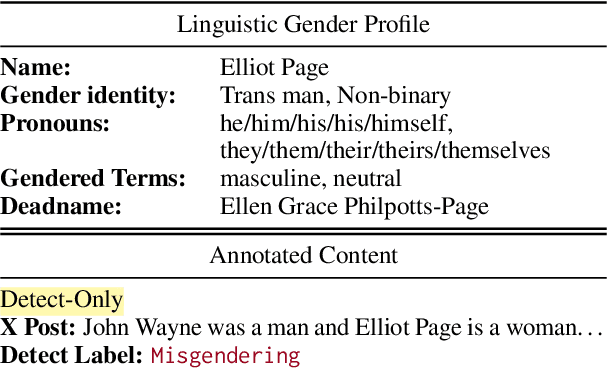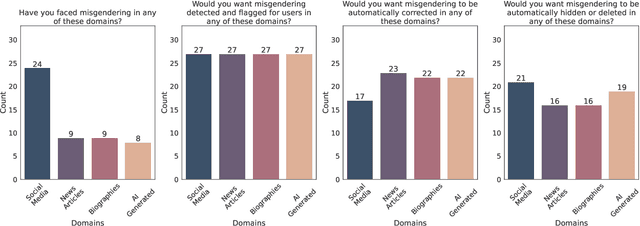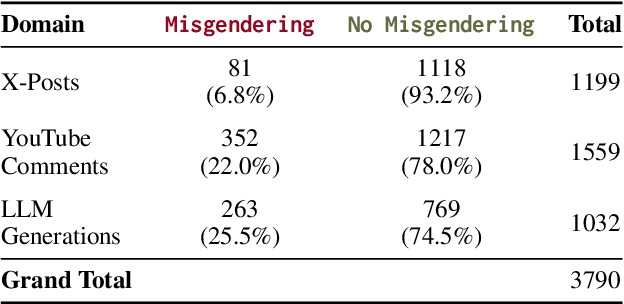Sameer Singh
Parallel Token Prediction for Language Models
Dec 24, 2025Abstract:We propose Parallel Token Prediction (PTP), a universal framework for parallel sequence generation in language models. PTP jointly predicts multiple dependent tokens in a single transformer call by incorporating the sampling procedure into the model. This reduces the latency bottleneck of autoregressive decoding, and avoids the restrictive independence assumptions common in existing multi-token prediction methods. We prove that PTP can represent arbitrary autoregressive sequence distributions. PTP is trained either by distilling an existing model or through inverse autoregressive training without a teacher. Experimentally, we achieve state-of-the-art speculative decoding performance on Vicuna-7B by accepting over four tokens per step on Spec-Bench. The universality of our framework indicates that parallel generation of long sequences is feasible without loss of modeling power.
Characterizing Mamba's Selective Memory using Auto-Encoders
Dec 17, 2025Abstract:State space models (SSMs) are a promising alternative to transformers for language modeling because they use fixed memory during inference. However, this fixed memory usage requires some information loss in the hidden state when processing long sequences. While prior work has studied the sequence length at which this information loss occurs, it does not characterize the types of information SSM language models (LMs) tend to forget. In this paper, we address this knowledge gap by identifying the types of tokens (e.g., parts of speech, named entities) and sequences (e.g., code, math problems) that are more frequently forgotten by SSM LMs. We achieve this by training an auto-encoder to reconstruct sequences from the SSM's hidden state, and measure information loss by comparing inputs with their reconstructions. We perform experiments using the Mamba family of SSM LMs (130M--1.4B) on sequences ranging from 4--256 tokens. Our results show significantly higher rates of information loss on math-related tokens (e.g., numbers, variables), mentions of organization entities, and alternative dialects to Standard American English. We then examine the frequency that these tokens appear in Mamba's pretraining data and find that less prevalent tokens tend to be the ones Mamba is most likely to forget. By identifying these patterns, our work provides clear direction for future research to develop methods that better control Mamba's ability to retain important information.
Leveraging In-Context Learning for Language Model Agents
Jun 16, 2025Abstract:In-context learning (ICL) with dynamically selected demonstrations combines the flexibility of prompting large language models (LLMs) with the ability to leverage training data to improve performance. While ICL has been highly successful for prediction and generation tasks, leveraging it for agentic tasks that require sequential decision making is challenging -- one must think not only about how to annotate long trajectories at scale and how to select demonstrations, but also what constitutes demonstrations, and when and where to show them. To address this, we first propose an algorithm that leverages an LLM with retries along with demonstrations to automatically and efficiently annotate agentic tasks with solution trajectories. We then show that set-selection of trajectories of similar tasks as demonstrations significantly improves performance, reliability, robustness, and efficiency of LLM agents. However, trajectory demonstrations have a large inference cost overhead. We show that this can be mitigated by using small trajectory snippets at every step instead of an additional trajectory. We find that demonstrations obtained from larger models (in the annotation phase) also improve smaller models, and that ICL agents can even rival costlier trained agents. Thus, our results reveal that ICL, with careful use, can be very powerful for agentic tasks as well.
Semantic Probabilistic Control of Language Models
May 04, 2025Abstract:Semantic control entails steering LM generations towards satisfying subtle non-lexical constraints, e.g., toxicity, sentiment, or politeness, attributes that can be captured by a sequence-level verifier. It can thus be viewed as sampling from the LM distribution conditioned on the target attribute, a computationally intractable problem due to the non-decomposable nature of the verifier. Existing approaches to LM control either only deal with syntactic constraints which cannot capture the aforementioned attributes, or rely on sampling to explore the conditional LM distribution, an ineffective estimator for low-probability events. In this work, we leverage a verifier's gradient information to efficiently reason over all generations that satisfy the target attribute, enabling precise steering of LM generations by reweighing the next-token distribution. Starting from an initial sample, we create a local LM distribution favoring semantically similar sentences. This approximation enables the tractable computation of an expected sentence embedding. We use this expected embedding, informed by the verifier's evaluation at the initial sample, to estimate the probability of satisfying the constraint, which directly informs the update to the next-token distribution. We evaluated the effectiveness of our approach in controlling the toxicity, sentiment, and topic-adherence of LMs yielding generations satisfying the constraint with high probability (>95%) without degrading their quality.
Benchmark Data Repositories for Better Benchmarking
Oct 31, 2024



Abstract:In machine learning research, it is common to evaluate algorithms via their performance on standard benchmark datasets. While a growing body of work establishes guidelines for -- and levies criticisms at -- data and benchmarking practices in machine learning, comparatively less attention has been paid to the data repositories where these datasets are stored, documented, and shared. In this paper, we analyze the landscape of these $\textit{benchmark data repositories}$ and the role they can play in improving benchmarking. This role includes addressing issues with both datasets themselves (e.g., representational harms, construct validity) and the manner in which evaluation is carried out using such datasets (e.g., overemphasis on a few datasets and metrics, lack of reproducibility). To this end, we identify and discuss a set of considerations surrounding the design and use of benchmark data repositories, with a focus on improving benchmarking practices in machine learning.
TurtleBench: A Visual Programming Benchmark in Turtle Geometry
Oct 31, 2024



Abstract:Humans have the ability to reason about geometric patterns in images and scenes from a young age. However, developing large multimodal models (LMMs) capable of similar reasoning remains a challenge, highlighting the need for robust evaluation methods to assess these capabilities. We introduce TurtleBench, a benchmark designed to evaluate LMMs' capacity to interpret geometric patterns -- given visual examples, textual instructions, or both -- and generate precise code outputs. Inspired by turtle geometry, a notion used to teach children foundational coding and geometric concepts, TurtleBench features tasks with patterned shapes that have underlying algorithmic logic. Our evaluation reveals that leading LMMs struggle significantly with these tasks, with GPT-4o achieving only 19\% accuracy on the simplest tasks and few-shot prompting only marginally improves their performance ($<2\%$). TurtleBench highlights the gap between human and AI performance in intuitive and visual geometrical understanding, setting the stage for future research in this area. TurtleBench stands as one of the few benchmarks to evaluate the integration of visual understanding and code generation capabilities in LMMs, setting the stage for future research. Code and Dataset for this paper is provided here: https://github.com/sinaris76/TurtleBench
Nudging: Inference-time Alignment via Model Collaboration
Oct 15, 2024



Abstract:Large language models (LLMs) require alignment, such as instruction-tuning or reinforcement learning from human feedback, to effectively and safely follow user instructions. This process necessitates training aligned versions for every model size in each model family, resulting in significant computational overhead. In this work, we propose nudging, a simple, plug-and-play, and training-free algorithm that aligns any base model at inference time using a small aligned model. Nudging is motivated by recent findings that alignment primarily alters the model's behavior on a small subset of stylistic tokens, such as "Sure" or "Thank". We find that base models are significantly more uncertain when generating these tokens. Leveraging this observation, nudging employs a small aligned model to generate nudging tokens to steer the large base model's output toward desired directions when the base model's uncertainty is high. We evaluate the effectiveness of nudging across 3 model families and 13 tasks, covering reasoning, general knowledge, instruction following, and safety benchmarks. Without any additional training, nudging a large base model with a 7x - 14x smaller aligned model achieves zero-shot performance comparable to, and sometimes surpassing, that of large aligned models. For example, nudging OLMo-7b with OLMo-1b-instruct, affecting less than 9% of tokens, achieves a 10% absolute improvement on GSM8K over OLMo-7b-instruct. Unlike prior inference-time tuning methods, nudging enables off-the-shelf collaboration between model families. For instance, nudging Gemma-2-27b with Llama-2-7b-chat outperforms Llama-2-70b-chat on various tasks. Overall, this work introduces a simple yet powerful approach to token-level model collaboration, offering a modular solution to LLM alignment. Our project website: https://fywalter.github.io/nudging/ .
Perceptions of Linguistic Uncertainty by Language Models and Humans
Jul 22, 2024Abstract:Uncertainty expressions such as ``probably'' or ``highly unlikely'' are pervasive in human language. While prior work has established that there is population-level agreement in terms of how humans interpret these expressions, there has been little inquiry into the abilities of language models to interpret such expressions. In this paper, we investigate how language models map linguistic expressions of uncertainty to numerical responses. Our approach assesses whether language models can employ theory of mind in this setting: understanding the uncertainty of another agent about a particular statement, independently of the model's own certainty about that statement. We evaluate both humans and 10 popular language models on a task created to assess these abilities. Unexpectedly, we find that 8 out of 10 models are able to map uncertainty expressions to probabilistic responses in a human-like manner. However, we observe systematically different behavior depending on whether a statement is actually true or false. This sensitivity indicates that language models are substantially more susceptible to bias based on their prior knowledge (as compared to humans). These findings raise important questions and have broad implications for human-AI alignment and AI-AI communication.
Are Models Biased on Text without Gender-related Language?
May 01, 2024Abstract:Gender bias research has been pivotal in revealing undesirable behaviors in large language models, exposing serious gender stereotypes associated with occupations, and emotions. A key observation in prior work is that models reinforce stereotypes as a consequence of the gendered correlations that are present in the training data. In this paper, we focus on bias where the effect from training data is unclear, and instead address the question: Do language models still exhibit gender bias in non-stereotypical settings? To do so, we introduce UnStereoEval (USE), a novel framework tailored for investigating gender bias in stereotype-free scenarios. USE defines a sentence-level score based on pretraining data statistics to determine if the sentence contain minimal word-gender associations. To systematically benchmark the fairness of popular language models in stereotype-free scenarios, we utilize USE to automatically generate benchmarks without any gender-related language. By leveraging USE's sentence-level score, we also repurpose prior gender bias benchmarks (Winobias and Winogender) for non-stereotypical evaluation. Surprisingly, we find low fairness across all 28 tested models. Concretely, models demonstrate fair behavior in only 9%-41% of stereotype-free sentences, suggesting that bias does not solely stem from the presence of gender-related words. These results raise important questions about where underlying model biases come from and highlight the need for more systematic and comprehensive bias evaluation. We release the full dataset and code at https://ucinlp.github.io/unstereo-eval.
MisgenderMender: A Community-Informed Approach to Interventions for Misgendering
Apr 23, 2024



Abstract:Content Warning: This paper contains examples of misgendering and erasure that could be offensive and potentially triggering. Misgendering, the act of incorrectly addressing someone's gender, inflicts serious harm and is pervasive in everyday technologies, yet there is a notable lack of research to combat it. We are the first to address this lack of research into interventions for misgendering by conducting a survey of gender-diverse individuals in the US to understand perspectives about automated interventions for text-based misgendering. Based on survey insights on the prevalence of misgendering, desired solutions, and associated concerns, we introduce a misgendering interventions task and evaluation dataset, MisgenderMender. We define the task with two sub-tasks: (i) detecting misgendering, followed by (ii) correcting misgendering where misgendering is present in domains where editing is appropriate. MisgenderMender comprises 3790 instances of social media content and LLM-generations about non-cisgender public figures, annotated for the presence of misgendering, with additional annotations for correcting misgendering in LLM-generated text. Using this dataset, we set initial benchmarks by evaluating existing NLP systems and highlighting challenges for future models to address. We release the full dataset, code, and demo at https://tamannahossainkay.github.io/misgendermender/.
 Add to Chrome
Add to Chrome Add to Firefox
Add to Firefox Add to Edge
Add to Edge